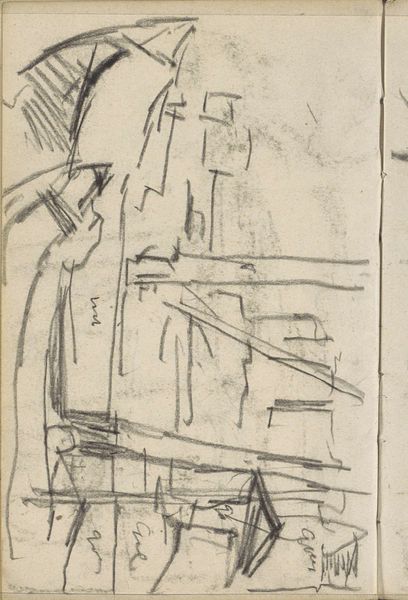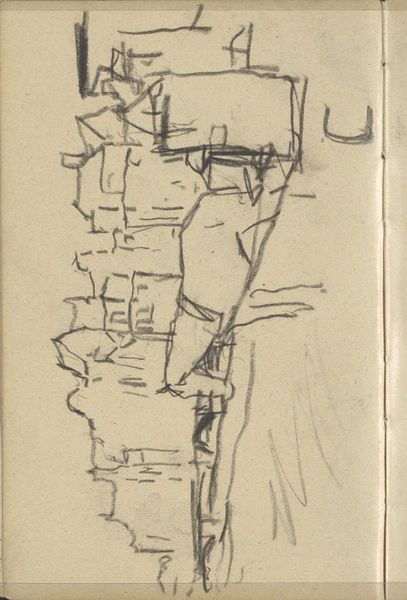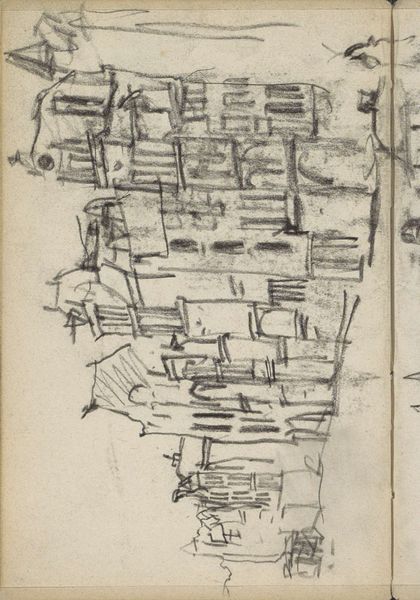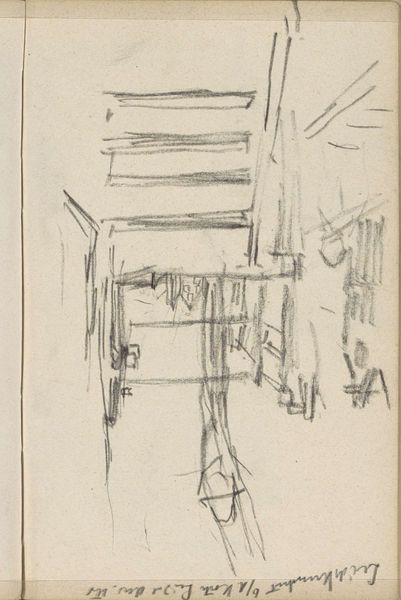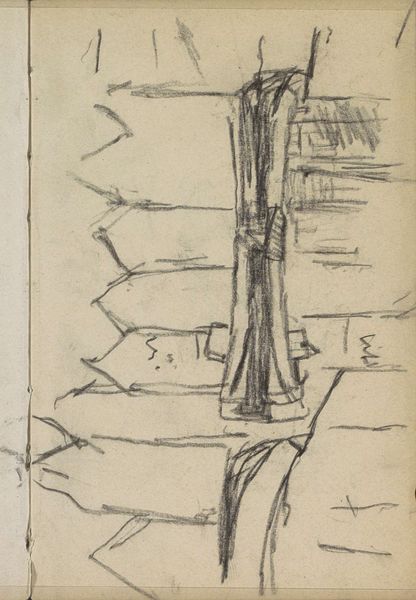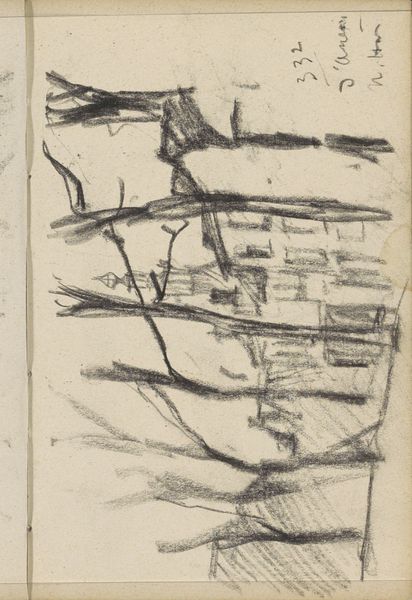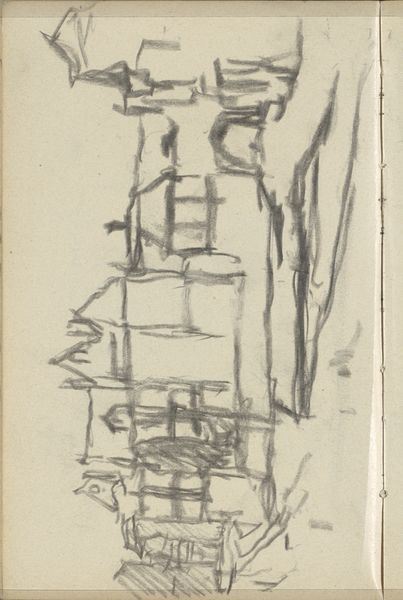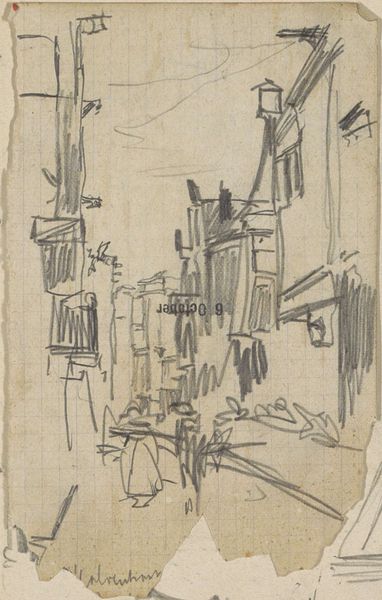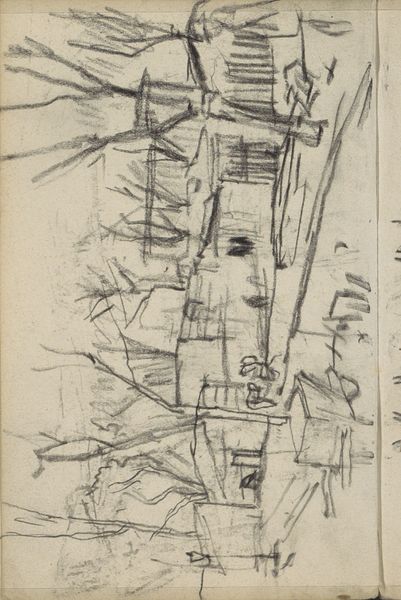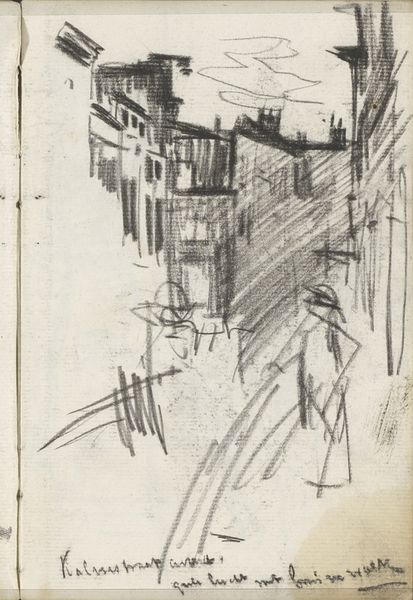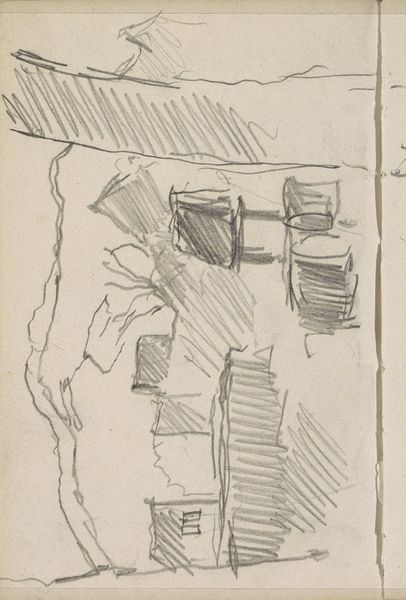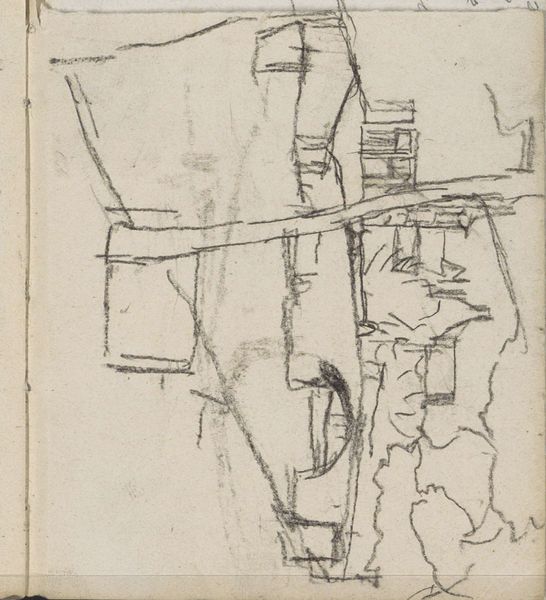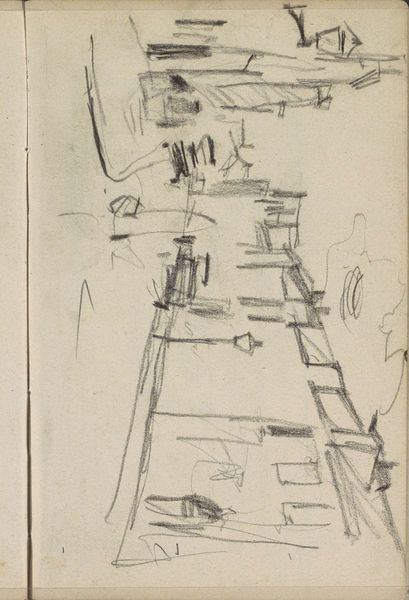
Copyright: Rijks Museum: Open Domain
Editor: This is “Gebouwen aan een gracht met boten,” or "Buildings on a Canal with Boats," a pencil and pen drawing by George Hendrik Breitner from 1912. It's currently housed in the Rijksmuseum. The sketchiness really gives it an ephemeral quality, like capturing a fleeting moment. What strikes you most about it? Curator: The immediacy of the sketch is fascinating, isn’t it? Breitner, celebrated for his photographic eye, gives us a glimpse into his working process here. Think about the rapid, almost frantic mark-making. What does that tell us about the *labor* involved in creating this cityscape? Was this preparatory, or a standalone exploration? Editor: I hadn’t considered the labor aspect so directly. It feels spontaneous, but I see your point; the density of lines, especially in the buildings, suggests a concentrated effort to capture the scene quickly. Does that suggest anything about the pace of life at the time? Curator: Precisely! Breitner was documenting Amsterdam during a period of intense industrialization and urbanization. The sketch could be interpreted as an attempt to capture a specific moment within the rapidly changing material conditions of the city. Are we looking at the *means of production*, not only in terms of art, but the city's means of production? The canal itself being a artery of commerce... Editor: That's such a clever point – the canal as a means of production! Seeing the drawing through that lens really shifts my understanding. It’s not just a pretty picture, but a record of labor, industry, and a changing society. Curator: Exactly! And consider the consumption of such images. Breitner was selling visions of Amsterdam. It makes you consider who the consumer of his art was and their place in this industrialized society. It’s the total system! Editor: This really opens up the drawing. I thought it was just a simple sketch but there is clearly much more going on in it than meets the eye. Curator: Indeed, examining the means of its production and social context offers so much in unlocking its complexities.
Comments
No comments
Be the first to comment and join the conversation on the ultimate creative platform.
